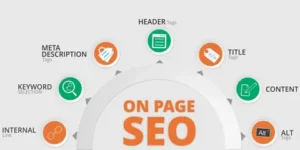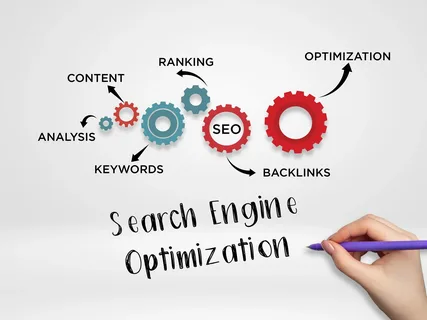Introduction:
In today’s digital landscape, Search Engine Optimization Techniques stands as a pivotal strategy for boosting online visibility and driving organic traffic. SEO involves a series of techniques and practices designed to enhance a website’s relevance and authority in search engine results. By focusing on keyword optimization, content quality, and technical improvements, businesses can effectively attract and engage their target audience. These techniques ensure that a website not only ranks higher in search results but also provides a better user experience, ultimately leading to increased conversions and sustained growth.
search engine optimization techniques
seo techniques
At its core, Search Engine Optimization Techniques is about aligning your online presence with search engine algorithms to meet user intent and preferences. This process encompasses on-page elements like meta tags and keyword integration, off-page strategies such as link-building, and technical adjustments to improve site speed and mobile-friendliness. By leveraging these methods, businesses can establish a robust online presence, outpace competitors, and connect with users who are actively searching for their products or services. Effective Search Engine Optimization Techniques requires ongoing analysis and adaptation to keep pace with evolving search engine standards and user behaviors, making it a dynamic and crucial component of digital marketing success.
Search Engine Optimization Techniques with detail:
-
-
Keyword Research:
Keyword research is the cornerstone of effective Search Engine Optimization Techniques in Digital Marketing, acting as the gateway to understanding what your target market is looking for on-line. This procedure involves identifying and analyzing the unique terms and terms users kind into search engines, which could reveal treasured insights into their needs and choices. By strategically deciding on these key phrases, you can tailor your content material to cope with relevant queries, improve your site’s visibility, and attract qualified site visitors.
-
- This targeted technique not only complements the relevance of your content material however also positions your website as a cross-to resource in your niche, boosting engagement and driving conversion.

-
Effective keyword research goes past truly deciding on popular phrases; it entails a deep dive into seek motive, competition tiers, and key-word versions. Utilizing equipment like Google Keyword Planner, SEMrush, or Ahrefs will let you uncover high-value key phrases with top of the line seek volume and doable competition. Incorporating those keywords naturally into your content, meta tags, and headers guarantees that search engines like google recognize your website online as quite relevant to user queries.
- Continually refining and updating your key-word approach based on overall performance information and evolving developments enables preserve your competitive area and guarantees sustained Search Engine Optimization Techniques achievement.
-
-
On-Page Optimization:
On-Page Optimization is a crucial aspect of Search Engine Optimization Techniques that focuses on improving individual web pages or web development to enhance their relevance and search engine ranking. This technique involves refining various elements of a webpage, such as title tags, meta descriptions, headers, and content, to align with targeted keywords and user intent. By crafting compelling, keyword-rich title tags and meta descriptions, you can significantly improve click-through rates from search engine results pages (SERPs).
-
- on page seo

- seo on page seo off page
- Structuring content with clear, descriptive headers (H1, H2, H3) not only makes it more readable but also helps search engines understand the context and hierarchy of information.
-
In addition to these foundational elements, on-page optimization also emphasizes the importance of high-quality, engaging content that meets the needs of your audience. Incorporating relevant keywords naturally into your content, while ensuring it provides value and answers user queries, is essential for boosting page relevance. Technical aspects, such as optimizing image alt text and ensuring a mobile-friendly design, further enhance your site’s visibility and user experience. Regularly updating and refining these elements based on performance metrics and SEO trends ensures your pages remain competitive and continue to attract and retain valuable traffic.
-
Off-Page Optimization:
-
Quality Content:
-
Technical SEO:
-
Backlink Building:
-
User Experience (UX):
User Experience (UX) is a critical facet of Search Engine Optimization (SEO) that directly impacts how visitors interact with your website and how search engines perceive its quality. A well-designed UX ensures that users can easily navigate your site, find the information they need, and have a positive overall experience. Key elements of UX optimization include intuitive site navigation, fast page load times, and a mobile-friendly design.
By providing a seamless and engaging user experience, you reduce bounce rates and increase the likelihood of repeat visits, which signals to search engines that your site is valuable and relevant.
marketing seo strategy
-
-

seo optimization steps
Additionally, optimizing UX involves ensuring that your content is easily accessible and engaging. This means using clear calls-to-action, readable fonts, and visually appealing layouts. Incorporating interactive elements and multimedia, such as videos and infographics, can also enhance user engagement and satisfaction. Regularly conducting user testing and analyzing behavior metrics, such as click-through rates and session durations, helps identify areas for improvement.
By focusing on UX, you not only enhance user satisfaction but also improve your SEO performance, as search engines increasingly prioritize user experience in their ranking algorithms.
-
Local SEO:
Local SEO is a vital component of Search Engine Optimization Techniques that focuses on enhancing a website’s visibility in local search results. Search Engine Optimization techniques is particularly crucial for businesses that operate within specific geographic areas and aim to attract customers from their local community. By optimizing your local SEO, you can ensure that your business appears prominently in search results when users search for relevant services or products in their vicinity.
Key elements of local SEO include creating and optimizing your Google My Business profile, which helps your business appear in local search results and Google Maps. Ensuring your business information is accurate and consistent across various online directories and review sites also strengthens your local presence.
Additionally, local SEO involves incorporating geo-targeted keywords into your website content and meta tags. Creating localized content, such as blog posts about local events or community news, can further enhance your relevance to local searches. Encouraging and managing customer reviews on platforms like Yelp and Google Reviews can boost your business’s credibility and influence local search rankings. Engaging with local community events and obtaining backlinks from local websites or news outlets can also improve your local authority.
By focusing on these local SEO strategies, you not only increase your visibility in local search results but also attract more customers from your immediate area.
search engine optimization tips and tricks
Conclusion:
FAQs
1. What is SEO and why is it important?
SEO (Search Engine Optimization) is the process of improving your website’s visibility on search engines like Google. It’s crucial because higher visibility means more traffic, which can lead to increased sales and brand awareness.
2. How do I conduct keyword research effectively?
Keyword research involves identifying the terms and phrases your target audience uses. Use tools like Google Keyword Planner or Ahrefs to find relevant keywords with high search volume and low competition, then integrate them naturally into your content.
3. What are some key on-page SEO techniques?
On-page SEO techniques include optimizing title tags, meta descriptions, header tags, and content. Ensure your keywords are strategically placed, your content is valuable, and your page structure is user-friendly.
4. How can I improve my site’s load speed?
Improving load speed involves optimizing images, minimizing code, and leveraging browser caching. Tools like Google PageSpeed Insights can provide specific recommendations to enhance your website’s performance.
5. What role do backlinks play in SEO?
Backlinks are links from other websites to your site. They signal to search engines that your content is valuable and trustworthy, which can improve your search rankings and authority.
6. How often should I update my SEO strategy?
Updating your SEO strategy should be an ongoing process. Regularly review performance metrics, stay updated with SEO trends, and adjust your tactics as needed to maintain and improve your search engine rankings.





